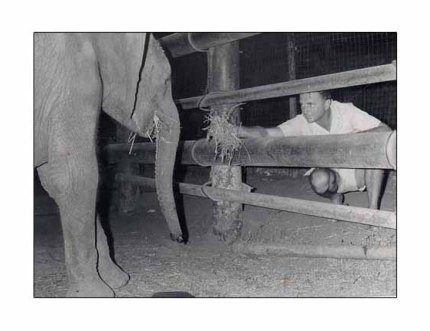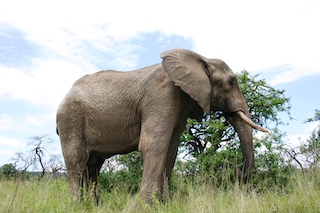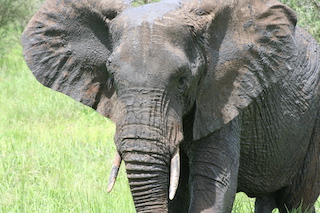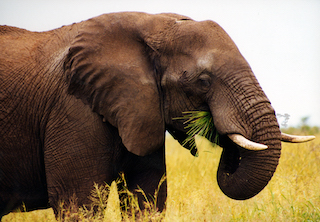David Sheldrick And The Elephants In Tsavo East
Major David Sheldrick was the late founder of Sheldrick Elephant Orphanage in Kenya. Before he founded the orphanage, he was the senior warden and one of the pioneers of Tsavo east national park during the sixties. His passion for the wilderness led him to undertake in-depth research delving into all early records of the habitat to comprehend the changes taking place in the Tsavo area under his control during his wardenship. By studying the root systems of trees and grasses, David understood the effect they had on a changing water table. Hence, David knew about Tsavo and its rhythms of life more than anyone. This is the story of David Sheldrick and the elephants in Tsavo East.
National park standards
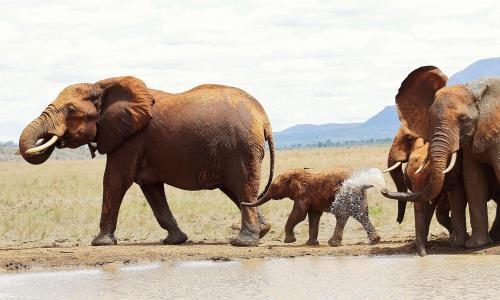
David Sheldrick and the elephants in Tsavo
During his tenure, David Sheldrick developed the Tsavo east region fully, with tourist streets, administrative roads, and anti-poaching tracks. All heavy machinery, every vehicle, and every borehole was in perfect working order. Spare parts filled all stores and staff uniforms lasted the park for five years.
Decimation of elephants
Tsavo east national park occupies half of the Tsavo region that the population of elephant utilizes. David Sheldrick marked and monitored the elephants to map their ranges. Besides, he also hand-reared and ultimately rehabilitated orphaned young of elephants. He was the first person to understand the human nature of elephants. The population numbers of elephants in the Tsavo region were 35,000 in the 1960s. But in the 1970s it went down to 20,000. And the next three decades decimated it to a mere 6,000. There were four population crashes that to a large extent led to the decimation. The park was devastated brought on by the adverse climatic conditions i.e., the drought followed by the flood. Moreover, the tribespeople poisoned the elephants. Then came the changes in the habitat within the national park. And there was in-house slaughter of elephants.
Adverse climatic conditions
The first crash was the drought in the 1970s when within just one year 10,000 elephants died of malnutrition. They were mainly females, elderly, weak, sick and sub-adults. Lack of vegetation and little rainfall weakened females and young ones. Independent bulls were able to travel in search of foliage, and thus their mortality was lower. Then came the onset of rains that made the elephants disperse although there was no indication of large-scale migrations.
Poisoning of elephants
The second crash was the illegal killing for elephant tusks by the Waliangulu tribe. The tribe resided just beyond in Giriama county in the park’s eastern boundary, and its culture entwined with elephants. Tribespeople hunted them using bows to fire poisoned arrows. They purchased the poison from traditional Giriama poison makers, who boiled up the roots and bark from a particular type of Acokanthera trees. The poison was so deadly that there was no antidote for it. The bulls who survived the first crash were the primary victims for their thick and massive tusks. When the remaining males became difficult to find, the females were targeted and then the entire families.
Changes in the habitat
The third population crash was the human population pressures beyond the park boundaries which deprived the elephants of much of their habitat. The wooded scrubland was gradually transforming to grassland, that was not beneficial to large browsers such as the elephant. The changes in the habitat within Tsavo east national park affected the animals. Thus, human-wildlife conflict diminished the elephant population further and put it into long-term decline.
Decades of slaughter
The fourth population crash happened when the government of Kenya suddenly abolished the board of trustees overnight in 1976 and seized control. They amalgamated the government game department with the national parks service, two organizations that had different roles. The game department had been responsible for monitoring the wildlife in settlement areas, and the national parks personnel protected and conserved wildlife within the protected areas. The merger proved disastrous because there was an in-house slaughter of elephant for ivory for three decades, perpetrated by Somalis armed with automatic rifles, and by the wardens and rangers themselves.
Departure and death
As part of the management reshuffle instigated by the Kenya government, David Sheldrick was moved from Tsavo to lead the planning unit of the wildlife organization, based in Nairobi. He oversaw the development of the country’s national reserves. But David never lived to fulfill this task. On the 13th of June 1977, six months later, he died suddenly of a heart attack. Dame Daphne Sheldrick, his widow, was given permission to live in the Nairobi national park to continue her work with the elephant orphans, who were coming into the orphanage fast and thick due to the factors affecting the elephant population crash. She is a wildlife rehabilitator, conservationist, and founder of Sheldrick wildlife trust in Kenya.
Poaching under control
Many years after David’s death, the Kenya wildlife service replaced the infamous and corrupt organization. In 1990, Dr. Richard Leakey came in as its director. It was he who brought the poaching of elephants under control in the protected areas and restored credibility to Kenya’s image of conservation. After that, world bank, notorious for its unwieldy bureaucracy, provided funding for a headquarters which was an impressive veneer to the organization. Also, the government allocated impressive sums to the wildlife service. But critics would soon point out the inefficient usage of government money.
Constraints at the department
The proficient management and running of the national parks department have always been a concern to the stakeholders and well-wishers of the wildlife. During Richard Leakey’s reign, the major complaint was the inefficient usage of the money allocated. Before that, David Sheldrick had complained that it was hard to maintain standards at east Tsavo with the paltry sum that had been earmarked by the new government. David also faced challenges while doing his field studies when some scientists came calling for the culling of elephants. Major David Sheldrick vehemently opposed it because he could see the problems this would create due to the prevailing circumstances at that time – people with ulterior motives.
History repeats itself
Either there is not enough money or they spend it inefficiently. Changes at the department can only happen if it has people who have conservation of the wilderness as the primary motive. Anything short of that is bound to be disastrous and undermines the relentless effort put in by the likes of David Sheldrick. As the country’s heritage and a major contributor to the economy, Kenya should start taking wildlife conservation and its maintenance seriously.
5 Frequently Asked Questions About Elephants
To receive a colourful digibook about elephant with videos, images and text, please fill out the following form or simply email us on safaris@safari-center.com

